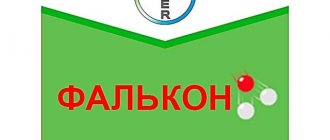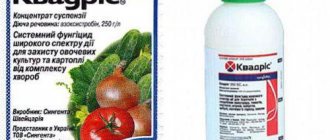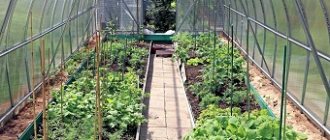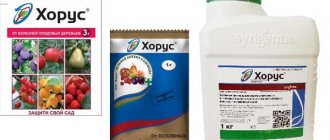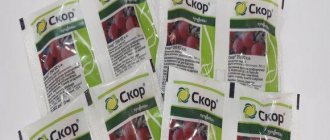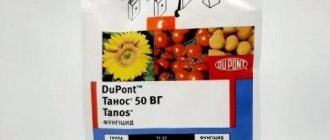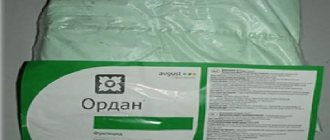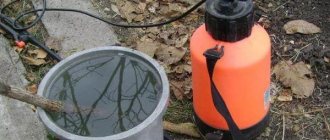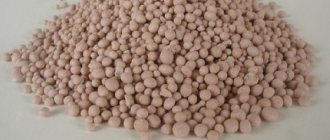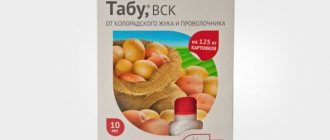Compound
The basis of the drug is copper-containing ammonium phosphate - about half.
Azophos also contains the following minerals:
- N;
- Zn;
- Mg;
- Cu;
- K;
- P;
- Mo.
Potassium is one of the main minerals that make up Azofos, as it is very important for the growth and development of plants, it improves the taste of ripening fruits and promotes the active development of ovaries.
Important!
If the dosage is not violated when diluting Azophos, then the working solution does not cause any harm to the plants that are treated with it.
Fungicide Azofos - video
Composition and characteristics of the fungicide
Topaz is the undisputed leader in sales for eliminating fungal diseases. It is used for plants growing in open and closed ground. Topaz is recommended for all types of crops that have powdery or downy mildew.
Maintains maximum yield. Topaz is used as a preventative in the garden. Helps prevent oidium in vineyards and rust in garden flower beds.
The remedy for plant diseases has a preventive and therapeutic effect due to the presence of the main component - penconazole. The substance belongs to the fungicidal type.
A positive aspect is the ability of this fungicide to stop the proliferation of fungal spores within three hours after spraying. The main chemical component is active against:
- coccomycosis;
- purple spotting;
- fruit rot;
- rust;
- powdery and downy mildew.
Instant defeat of fungal spores prevents the development of the disease, stops the result and activity of the fungus at all stages of development. The penetration of the substance is as fast as possible, which distinguishes Topaz from already known fungicides. Plus, the remedy:
- not afraid of humidity and rain;
- temperature changes;
- distributed evenly throughout the infected plant, as it penetrates into the juice;
- provides protection for mature and developing shoots.
If you use Topaz as a preventive substance, as indicated in the instructions, this will ensure rapid restoration and preservation of the plant and productivity. But to achieve the goals (treatment and prevention), it is necessary to follow exact dosages and patterns of use. The necessary information is described in the instructions for Topaz.
Release form
This drug is marketed in the following forms:
blue paste. It contains 65% active ingredient. This type of drug is packaged in plastic jars of 0.5 kg; suspension - a suspension of small particles in water, its color is blue. This solution is packaged in plastic containers of different volumes.
Photo of Azofos fungicide
How to use Azofoska?
When used regularly, soil depletes resources. To maintain productivity, it is necessary to apply fertilizing. “Azofoska” is perfect for this purpose, which is used not only for summer cottages, but also on an industrial scale.
“Azofoska” is a solid granular substance of white or pinkish color. The granule size is 1–4 mm. Contains 3 active components: Nitrogen (15–25%) is part of proteins, leads to an increase in life cycles (increases the number of ovaries and fruits). Phosphorus (5–20%) stimulates development during the growing season. Potassium (5–19%) stimulates metabolic processes, has a beneficial effect on plant immunity, participates in the development of the root system, and affects the color and taste of the fruit.
In addition to the main components, Azofoska contains sulfur (2.5–4%), which is involved in the process of photosynthesis. With an excess of nitrogen, it promotes the breakdown of nitrates.
Main functions of "Azofoski":
- Strengthening plant immunity helps resist diseases, as well as adapt to climate change.
- Yield growth due to increased fruit mass.
- Increasing the nutritional value of plants.
- Increasing the shelf life of plants.
“Azofoska” is a solid granular substance of white or pinkish color
Varieties
Depending on the quantitative composition of the active elements nitrogen (N), phosphorus (P), and potassium (K), several types of fertilizer are distinguished.
NPK 16:16:16 classic product has an equal amount of each of the main elements, used in the spring when digging the soil (dilute 30–40 g in water), for feeding fruit crops (40–60 g per 1 m2), seedlings of tomatoes, eggplants ( 4–5 g per well).
NPK 19:9:19 This type is used for soils containing a sufficient amount of phosphorus. The greatest effectiveness of application is in areas with a warm, dry climate, where phosphorus is not washed out of the soil.
NPK 22:11:11 due to high dosages of active substances, is used to restore fertility in tired, depleted soils (which are intensively used every year).
Application of "Azofoska"
"Azofoska" is suitable for any agricultural crop. Can be used both as a top dressing and as a basic fertilizer for plants.
It can be used not only in open ground, but also in greenhouses. The effectiveness of the fertilizer will be manifested regardless of the type of soil (its acidity or granulometric composition).
"Azofoska" is suitable for any crops
Efficiency of "Azofoska" for different soils
For leached, soddy-podzolic clay soils, with a one-time introduction of the entire dose and with repeated partial application, the effectiveness is the same.
In the case of ordinary, carbonate and southern chernozem, a lesser manifestation of the positive effects of “Azofoska” is observed.
For chestnut soils and gray soils, the effect of fertilization can be increased by irrigation.
Application
There are some rules for using fertilizer:
- In spring, azofoska should be applied first, before planting.
- In the fall, it is better to use fertilizer while digging the ground.
- For summer baits, the dosage should be reduced by 2 times.
- The drug must be applied in strict dosages; its excess will not be absorbed, accumulating in plants and fruits.
- To avoid the accumulation of nitrates in the soil, Azofoska should be used for no more than 2 years in a row, then you should take a break and start using organic preparations (manure, compost).
- Azofoska should be applied only to heated soil; this should be done no earlier than May and no later than the beginning of October. Otherwise, nitrates will accumulate in the upper layers of the soil and then be absorbed by plants.
Use of the drug Azofos
Primarily, Azophos is used as a prophylactic against diseases caused by fungi and pathogenic bacteria:
- late blight;
- root rot;
- bacteriosis;
- anthracnose;
- moniliosis;
- Alterngaria;
- septoria;
- scab;
- coccomycosis;
- Phomopsis;
- clusteriosporiosis.
Since Azofos contains many different active substances, it can be used not only as a fungicidal agent, but also as a foliar fertilizer for garden and vegetable crops. Since it contains many macro and microelements, the Azophos-based working fluid is quickly absorbed by plant foliage.
Due to the speed of absorption of the drug, its effectiveness is comparable to a complex of mineral preparations.
FUNGICIDES!
Fungicide Horus Fungicide Antracol
What is the difference between Azofos and Azofoska
The compositions of Azofos and Azofoska are similar to each other, so very often they are considered the same drug, believing that these words are synonyms. In fact, we are talking about different means:
- Azophos is a fungicide. Therefore, it is used mainly for the treatment and prevention of fungal diseases of various crops.
- Azofoska is a fertilizer that is applied to the soil to improve plant nutrition.
The main difference between the products is that Azofos is a fungicide, and Azofoska is a fertilizer
The preparations also differ in that the fungicide is always sprayed only on plants, and the fertilizer is added directly to the soil. And since Azophos contains several basic microelements, it can be considered a foliar feeding. At the same time, Azofoska is also a top dressing, but it is applied only by the root method.
Consumption rate of the drug
Dose of different forms of Azophos per 5 liters of water:
- 50 ml suspension;
- 35-40 ml of paste.
The dosage of the paste is less than that of the suspension, since in the first case the amount of active substance is 15% more than in the suspension.
How much working fluid is required for crops depends on their size and age. So, for an apple tree you need 1 bucket of Azophos working solution for processing, and for a young tree no older than 5 years - only 2 liters.
Rules of application
The use of Azophos in accordance with the norm guarantees the absence of negative consequences, as summer residents and farmers say in their reviews. The dosage and consumption of the solution must be carefully observed, since the drug is not only a fungicide, but also a foliar feeding. And excess fertilizer almost always harms plants.
Terms and frequency of processing
The timing and frequency are determined by culture. Most often, 2 procedures are carried out - the use of Azophos in spring and mid-summer. It happens that the multiplicity is increased to 3-4 (in the case of currants, plums, cherries, cherry plums).
The period also depends on the type of soil:
- In autumn, the use of Azophos is advisable if the soil has a heavy clay structure or belongs to black soil.
- If the soil is light, the fungicide is applied during spring plowing (in April).
Preparation of the solution
Preparing a fungicide solution is quite simple:
- First, measure out the required amount of solution or paste.
- Then pour into 5 liters of tap water.
- Stir thoroughly and add the second half of the volume (up to 10 l).
- Mix again and pour the liquid into a spray bottle (through a funnel).
The drug is first dissolved in a small volume of water, then adjusted to 10 l
How to use for processing
The fungicide must be sprayed exactly according to the instructions, observing the dosage. The rules for processing Azofos do not depend on the season - spring, summer and autumn procedures are not fundamentally different.
Vegetable crops
Azophos is used for cucumbers, tomatoes and other vegetable crops. Consumption and frequency depend on the type of crop. For example, Azofos for potatoes is taken in the amount of 130-200 ml per bucket of water, and for cucumbers - only 10 ml.
| Culture | Dosage, ml per 10 l | Frequency of treatments* | Waiting period** |
| Potato | From 130 to 200 | 3 | 20 |
| Tomatoes in a greenhouse | From 130 to 200 | 2 | 8 |
| Cucumbers in a greenhouse | 200 | 3 | 5 |
*Number of treatments per season. The minimum interval between them is 2 weeks.
**The number of days that must pass from the last treatment with Azofos fungicide until harvest.
There are no strict restrictions on the period of processing of plants. The instructions for the fungicide indicate that spraying should be carried out during the growing season, i.e. virtually at any stage of active growth. The consumption of the working solution depends on the area:
- Potatoes: 10 liters per 10 m2.
- Tomatoes: 2 liters per 10 m2.
- Cucumbers: 2 liters per 10 m2.
Important! The given consumption figures for Azofos fungicide correspond to the main form of release - an aqueous suspension. If you use a paste, the amount must be recalculated based on the fact that the concentration of active ingredients in it is 15% higher (65% instead of 50% in suspension).
Fruit and berry crops
In the case of fruit and berry crops (for example, Azofos for strawberries), the following fungicide consumption rates have been established.
| Culture | Dosage, ml per 10 l | Frequency of treatments | Waiting period |
| Apple and pear | 100 | 2 | 20 |
| Currant | 100 | 3 | 25 |
| Wild strawberries, strawberries, raspberries | 100 | 2 | 25 |
| Plum, cherry plum, cherry | 100 | 4 | 20 |
| Cranberry | 100 | 1 | 70 |
| Cowberry | 100 | 1 | 70 |
| Blueberry | 100 | 2 | 74 |
The consumption of the fungicide working solution depends on the age of the shrub or tree, as well as on the area:
- Apple tree up to 5 years old - 2 liters per seedling, older - up to 10 liters per hole.
- Cherry, cherry plum and plum - similarly with apple tree.
- Currants - 1-1.5 liters per bush.
- Cranberries, blueberries and lingonberries - 3 liters per 100 m2.
Important! Azophos can also be used for grapes. Treatment is carried out 2 times in the fall - first before covering the bush for the winter, then after. The minimum air temperature should be 5 degrees Celsius.
Consumption for processing grapes: from 250 to 300 g per standard bucket of water (10 l)
When and how to fertilize with Azophos
Processing times depend on the crops. It is also important to know when to treat crops in the garden - the effectiveness of the drug depends on this.
Typically, Azophos treatments are carried out in the spring and in the second ten days of July. But if necessary, additional spraying should be carried out (up to 4 times).
Usually the following crops have to be processed so many times:
- currants;
- plum;
- cherry trees;
- cherry plum
Photo table of application rates for treatment with Azofos
The timing of this procedure also depends on the type of soil:
- in the autumn, Azophos should be applied to heavy clay soils or black soil;
- In light soils, this fungicidal preparation is applied during spring digging (not earlier than April).
Advantages and disadvantages
- During spraying, the Azofos working solution must be constantly stirred;
- The working substance must be used on the day of its preparation. It is prohibited to store the solution;
- When spraying, the product quickly clogs the filters, as well as the sprayer nozzles;
- The Azofos fungicide should not be combined with preparations containing polysulfide sulfur (for example, lime-sulfur decoctions).
If we compare it with other drugs of similar action, Azofos has many advantages, but it also has some disadvantages.
Advantages:
- high efficiency:
- easy to use;
- not harmful to the environment and the human body;
- the components of the drug do not accumulate in the fruits even with repeated use;
- the drug contains elements that have a positive effect on crop growth;
- suitable for various fruit trees and shrubs;
Flaws:
- the working solution is prepared only before use, the shelf life of the finished liquid is no more than a day;
- During processing, the solution must be stirred periodically;
- It is better to spray trees and shrubs with Azofos manually; the product clogs the nozzles and filters very quickly;
- Azofos cannot be used with preparations containing polysulfide sulfur;
How to prepare Azophos working solution
It doesn't take much effort to prepare the working fluid.
To do this you need to do the following:
- measure the required dose of the drug in a paste (about 40 ml) or suspension (50 ml);
- this amount of Azophos should be dissolved in 5 liters of liquid;
- mix thoroughly and add water to the bucket’s volume;
- The solution is stirred again and transferred to a spray bottle.
Fungicide "Azofos": how to dilute and apply
Among farmers and gardeners, the popularity of fungicides is growing almost every day. If just a few years ago these preparations were viewed with caution and some suspicion, today they are indispensable assistants in the process of caring for plants.
One of the most effective fighters against fungal infections on fruit and berry plants is a new generation fungicide - “Azofos”, or simply “azofoska”. Let's find out what it consists of, how to prepare it and how to use it.
Composition and release form
"Azofos" was developed by Belarusian scientists using the latest scientific achievements. It is known in agricultural circles as a safe product that is manufactured in compliance with all environmental, sanitary and hygienic standards.
The main part of the composition (more than 50%) of the fungicide is made using ammonium copper phosphate (AMP). In addition, the drug is rich in microelements, a significant proportion of which are phosphorus, copper, potassium, molybdenum, nitrogen, zinc and magnesium additives. The presence of these microelements promotes high-quality and healthy growth of the plant, and also allows the use of azofoska as a top dressing.
The dosage form is a water-based suspension.
Thanks to the designated chemical composition, Azofos quickly destroys fungal microorganisms that have settled on the crop, thus significantly increasing the yield. In addition, it is not dangerous to your health (belongs to toxicity class 4) and is environmentally friendly.
Advantages
Azofoska has a wide list of advantages, including:
- high efficiency of use;
- ease of preparation of the working solution and application;
- belongs to the 4th toxicity class, and accordingly is safe for human health, honey insects and the environment;
- The harmless chemical composition of the fungicide allows it to be used more than once per season. At the same time, it does not provoke a high pesticide load on the soil and plants;
- the presence of a large number of microelements in the agrochemical composition contributes to the healthy functioning of the plant, since it qualitatively feeds the crop through the root system;
- azofoska has a huge range of applications, it can be applied to almost all fruit and berry crops;
- reasonable price, when compared with other imported pesticides, makes chemical treatment of plantings much cheaper;
- optimal means of protection against late blight;
- promotes healthy development of the root system of the crop;
- increases the plant’s resistance to sudden changes in climatic conditions.
Operating principle
Azofoska is one of the agrochemicals of contact action, that is, it fights diseases and pests on the surface of the leaves and stems of the crop. Method of application: spraying.
The fungicide is also used as a fertilizer. Farmers with experience advise using it on peat, clay, marshy soils, and heavy soils. However, it is recommended to strictly adhere to the required proportions.
Preparation of working solution
When preparing a solution of the Azofos fungicide, you must follow all doses indicated in the instructions for use and instructions on how to dilute it.
The dosage depends on the type of crop itself and the type of its disease.
The optimal container for the solution is a container made of plastic, glass or metal of the required volume. The dosage of the drug should be measured strictly according to the instructions.
It is prohibited to combine Azofos with pesticides that contain polysulfide sulfur (PSC, lime-sulfur solutions).
The required amount of azofoska (optimal dose - 100 ml) is dissolved in 4-5 liters of water and mixed thoroughly. Then add more water. The optimal solution rate is 10 liters. After stirring the mixture again, you can safely begin spraying.
Processing method and timing, consumption
Depending on the variety of crop, the degree and type of its disease, the timing of application and consumption of the working solution are determined.
There are only two ways to use azofoska: spraying and root watering.
- raspberries, strawberries and strawberries must be sprayed twice: the first - before flowering, the second - after picking the berries. The optimal dose of fungicide is 30 ml per 1 m² of area;
- To eliminate pests on cranberry and lingonberry plantings, use 30 ml of the drug per 1 m² of planting area. Spray the berry bushes once before flowering;
- The healing process of cherries, plums, cherry plums, apricots, sweet cherries must be organized 4 times. The first time the trees are treated is carried out during the period of swelling of the buds, the second - at the beginning of the budding phase of the plant (before flowering), the third - after flowering, the fourth - after harvesting. For a fruit-bearing crop, it is necessary to prepare 10 liters of working solution, for a tree aged 3 years or less - 2 liters;
- pear and apple trees are sprayed with the preparation twice to protect the trees from attacks by scab and fruit rot. The first spraying process is carried out during the period of bud swelling. In addition to the buds, it is necessary to treat the trunks and the circles around the trunk. The second treatment should take place before flowering begins. The norm of the working mixture for a tree up to 6 years of age is 2 liters, for an adult - 10 liters;
- currants need to be sprayed three times: when they bloom, when they have bloomed, and when the harvest has been harvested. For one bush you need to spend 1.5 liters of the mixture.
Pros and cons of the product
The main advantages of Azofos are:
- this fungicide is very effective - most often one spraying of plants is enough to protect them from major diseases;
- the drug is universal - it can be used to process not only vegetables, but also fruit and berry crops;
- Azofos can be used as a fungicidal preparation, and can also be used as a foliar fertilizer for plants;
- thanks to this drug, plants become more resistant to most diseases, as well as to sudden temperature fluctuations;
- adding the drug to the soil promotes better development of plant roots;
- the price of Azofos is not too high, especially compared to the cost of imported analogues;
- toxicity class of the drug Azofos is 3. This means that it is not dangerous for the human body, warm-blooded animals, cultivated plants and insects;
- the ingredients of the product do not accumulate in the soil, so this drug can be used to treat plants annually.
Among the disadvantages of Azofos, the following should be noted:
- Particles of copper, which is part of the fungicide, often clog sprayer nozzles. This must be remembered when processing large areas;
- the prepared working fluid is used within 3 days;
- unused solution cannot simply be poured into the sewer - special services must deal with its disposal;
- When processing plants, the working fluid must be stirred from time to time so that the suspension is evenly distributed in the solution.
Advantages of the drug
The main advantage of the medicine is its high efficiency. The drug also has a number of other advantages, among which it is worth highlighting:
- ease of preparation of the solution for treatment;
- low toxicity and load on plants and soil;
- mineral supplements contribute to the normal functioning of plant crops, as they nourish them through the structures of the root system;
- wide range of uses;
- availability;
- increasing plant resistance to climate.
Precautionary measures
This drug is classified as toxicity class 3, so it is moderately dangerous for:
- human body;
- warm-blooded animals;
- bees and other similar insects;
- vegetable and horticultural crops.
When working with this fungicide, you do not need to use personal protective equipment, including safety glasses or work gloves. In case of contact with skin, Azofos is easily washed off with running water and soap. If it gets into the mucous membranes of the eyes, they are also washed under running water.
If you get it in your mouth, you need to take several tablets of activated carbon and wash them down with plenty of water.
Advantages and disadvantages of the product
Now a few words about the advantages and disadvantages of the drug.
Let's start by listing the advantages of the drug:
- Topaz is suitable for the vast majority of garden plants;
- Topaz is absorbed into the plant tissue and protects the entire plant, and not just the part that was treated with the pesticide;
- The product is not phytotoxic. Pesticides do not accumulate in fruits;
- High compatibility with many other drugs, including insecticides, which allows you to combine products for comprehensive protection against pests and diseases;
- The drug begins to act quickly;
- Topaz is extremely effective and does not require multiple treatments;
- The product is quickly absorbed, which protects it from being washed off by rain or during surface watering;
- Pathogenic fungi do not develop resistance to treatment with this fungicide, even if it is used regularly.
Among the disadvantages are the following qualities:
- The diluted solution must be used quickly enough;
- The product is toxic to fish;
- During the flowering period, it is advisable to exclude morning processing so as not to harm pollinating insects;
- Despite all the advantages, after 3 years of use you need to take a break to prevent the accumulation of nitrates in the soil.
How to store the drug
Azophos is stored in places inaccessible to children and animals; it should not be kept near food, animal feed or medicines.
The storage place should be dark with a humidity of about 50-60% and an air temperature of no more than 24 degrees Celsius. If the drug is removed for long-term storage, it is left in its original packaging.
Azofos fungicide remains valid for 3 years from the date of its manufacture
. If the original packaging is opened, then this drug must be used within the next six months. Therefore, summer residents purchase this drug in small packaging for their plots in order to use it during the current summer season.
Terms and conditions of storage
The shelf life of the drug from the date of manufacture is 3 years. It is recommended to store the product in a tightly closed container in a cool place, protected from sunlight.
If the container with the fungicide has been opened, its shelf life is no more than 6 months.
Analogs
Among Azophos analogues, the most effective are:
- Nitroammofoska is a drug with a high sulfur content;
- Nitroammophos, which does not contain potassium;
- Nitrophoska - this product is enriched with magnesium.
"Strobe"
Manufacturer:
Properties of the drug : The main active ingredient of the chemical is kresomsim-methyl. When it gets on the plant, a protective film is formed. When a fungicide acts on the pathogen, its cells are inhibited, which leads to its death. The uniqueness of Strobi fungicide lies in its ability to replace the action of several fungicides. The drug has a simultaneous effect on a large number of pathogenic microorganisms. Strobi fungicide can be used as a preventive measure for plant diseases or as a therapeutic agent.
Plants : Fruit trees; grape; ornamental and flower shrubs; vegetables.
Objects of application: almost all types of spotting; gray mold; scab; powdery mildew; various types of rust ; late blight and stem rot; black; mildew; rubella; tinder; Stemphylliosis
Recommendations for use : In field conditions, the protective function of the drug lasts up to 2 weeks after spraying, and indoors - up to 21 days. It is not recommended to combine the product with oils, Bordeaux mixture, compounds containing copper and calcium, as well as preparations with an alkaline reaction, and sulfide-based mineral fertilizers.
Application rate per 10 liters of water : 2 g
Advantage of the drug: This is a universal and very reliable product used to protect garden and indoor plants. Can be used during flowering plants. Compared to other similar preparations, “Strobi” penetrates into the very structure of the leaf, being distributed completely outside and inside it, and even if only one side of the leaf plate is treated (the plant absorbs only a small part of the active substance). The most pronounced reaction of apple and pear trees is a significant greening of the foliage, and this mainly indicates the complete destruction of the scab. This effect manifests itself after three procedures of spraying with a fungicide. Resistant to heavy rainfall.
Notes: Each treatment with Strobi must be preceded by treatment with a non-stribilurin class agent. Analogues – Skor, Trichodermin, Strobitek. The period between spraying and precipitation should be at least 2 hours.
Retail packaging available.
Before using the drug, carefully read the instructions for use!!!
Material prepared by: horticulture specialist Buinovsky O.I.
Compatibility of Azophos with other drugs
This fungicide can be used with almost all pesticide preparations. Typically, a solution of such drugs is prepared immediately in one tank. Azofos should not be used simultaneously with products that have an alkaline reaction. In this case, when such substances are mixed with Azophos, an exchange reaction occurs and a precipitate forms.
Important!
Typically, before mixing large quantities of different pesticides, a few grams of each are mixed in a small container and diluted with water. If no reactions occur, then the substances are compatible with each other.
Price
Azophos is a cheap remedy. A suspension of the drug, packaged in half-liter plastic bottles, costs around 5 rubles. Liter bottles cost from 9 to 10 rubles apiece.
Instructions for use
Azofos is used in two ways:
- Spraying leaves as foliar feeding.
- Watering the soil.
Depending on the type of crop, a certain amount of the product is diluted in 10 liters of water.
Potatoes are treated to protect against late blight and Alternaria blight up to 3 times per season. The last spraying is carried out 3 weeks before harvest. Suspension consumption is 130-200 milliliters to treat 100 square meters. To spray tomatoes indoors, use 130-200 milliliters of product per 1 hectare of area. Carry out up to 2 sprayings per season. The last treatment is carried out 8 weeks before harvesting.
Expert opinion
Zarechny Maxim Valerievich
Agronomist with 12 years of experience. Our best country expert.
Ask a Question
Cucumbers are treated to protect against root rot and spotting. Use 200 milliliters of suspension. The crop is processed during the growing season, watered at the root.
Stone fruits can be processed up to 4 times per season. To do this, dilute 100 milliliters of Azofos in water. The last spraying is carried out 3 weeks before harvest. Cranberries, lingonberries, blueberries are sprayed once. To do this, dilute 100 milliliters of the product in water. At least 70 days must pass from the last treatment to harvest.
Fungicide Azofos: reviews of use
Vera, 44 years old, Lyubertsy: I have been using Azfos to treat my garden for several seasons, and before that I used Bordeaux mixture to prevent plants from diseases. But I like Azofos more because it can be used not only as a fungicide, but also as a plant feed. And during treatment, the plants are simultaneously protected from diseases and receive the necessary nutrition.
Andrey, 45 years old, Krasnodar region: We have large areas occupied by potatoes. To reduce the cost of growing it, I spent a long time looking for fungicides that would be fairly cheap. The best turned out to be Azof - a cheap drug that simultaneously protects potatoes from diseases and is an excellent foliar feeding. And the instructions say that it can be used to process other vegetables and fruit and berry crops. I recommend to all.
Before using the drug, you must read the instructions for use of Azophos and strictly follow the dosage of the substance when diluting it.
It is worth remembering that when carrying out several treatments of plants per season, it is necessary to maintain an interval between spraying of at least 12-14 days.
Description of the drug
Azophos is a contact fungicide. This means that the substances do not enter the plant tissue - they remain on the surface of the stems, leaves and other parts.
Composition of Azophos
The drug contains a mixture of copper-containing ammonium phosphates (50%). The fungicide also contains mineral compounds of the following elements:
- nitrogen;
- zinc;
- magnesium;
- copper;
- potassium;
- phosphorus;
- molybdenum.
Azophos without potassium is not available for sale. However, this microelement is always included in the fungicide. It plays an important role in plant development. If the dosage is observed, no side effects are observed.
Release forms
Azofos fungicide is available in two main forms:
- A blue paste containing 65% active ingredient (packaged in 500 g plastic jars).
- Aqueous suspension, i.e. a suspension of solid particles in water (blue solution). Packaged in plastic bottles of various sizes.
| Volume, ml | Weight, g |
| 470 | 580 |
| 940 | 1160 |
The most common form of release is an aqueous suspension in a plastic bottle.
What is Azophos used for?
Azofos fungicide is used for several purposes, the main of which is the prevention of the development of fungal and bacterial diseases:
- late blight;
- root rot;
- bacteriosis;
- brown spot;
- anthracnose;
- moniliosis;
- Alternaria blight;
- septoria;
- scab;
- coccomycosis;
- Phomopsis;
- clusteriosporiosis.
Due to its diverse composition, Azophos is used not only as a fungicide, but also as a foliar fertilizer for all types of crops. It contains essential microelements that are well absorbed by plants in the form of an aqueous solution. In terms of the degree of impact, it can be compared with a complex mineral fertilizer.
Consumption rates
The standard dosage of this fungicide per 10 liters of water is:
- 100 ml suspension;
- 75 ml paste.
The use of Azophos in the form of a paste involves selecting a smaller amount, since the concentration of the active substance in this case is 65% versus 50% for the suspension.
The application rate depends on the specific crop, as well as on the age of the plant. For example, an adult apple tree requires 10 liters of working solution, while a five-year-old tree needs 2 liters.
Advantages
Azofoska has a wide list of advantages, including:
- High efficiency of use,
- Ease of preparing the working solution and application,
- It belongs to the 4th toxicity class, and accordingly is safe for human health, honey insects and the environment,
- The harmless chemical composition of the fungicide allows it to be used more than once per season. At the same time, it does not provoke a high pesticide load on the soil and plants,
- The presence of a large number of microelements in the agrochemical composition contributes to the healthy functioning of the plant, since it qualitatively feeds the crop through the root system,
- Azofoska has a huge range of applications, it can be applied to almost all fruit and berry crops,
- An acceptable price, when compared with other imported pesticides, makes chemical treatment of plantings much cheaper,
- The optimal means of protection against late blight,
- Promotes healthy development of the crop root system,
- Increases the plant's resistance to sudden changes in climatic conditions.
Processing method
The tool can be used in two ways:
- spray leaves for foliar feeding and protection against diseases;
- water the soil to disinfect and enrich it with nutrients.
The product is used not only on vegetables but also on fruit crops:
- raspberries and strawberries are sprayed at a dosage of 30 ml of working solution per 1 square meter. m area;
- Fruit trees are protected from scab by spraying twice - during bud swelling and before flowering in a dosage of 10 liters per adult;
- currants and gooseberries are sprayed three times - during and after flowering and after picking berries, spending 1.5 liters per bush.
Treatment is carried out in the evening in calm, dry, windless weather.
How to prepare a solution for treatment
First you need to prepare a suitable container, its volume should be at least 10-12 liters. The container must be made of plastic or glass; metal utensils cannot be used. The container is filled with 5 liters of settled water at room temperature, and approximately 100 ml of suspension is added to it (depending on the concentration and purpose of use). Afterwards, the liquid is thoroughly mixed, the same amount of water is added and mixed again. After filtration, the solution is ready for use. It must be used within 24 hours.
